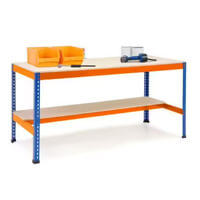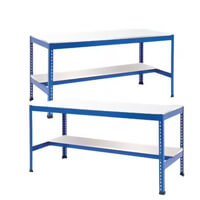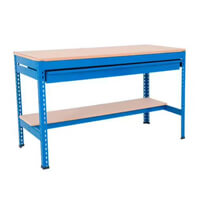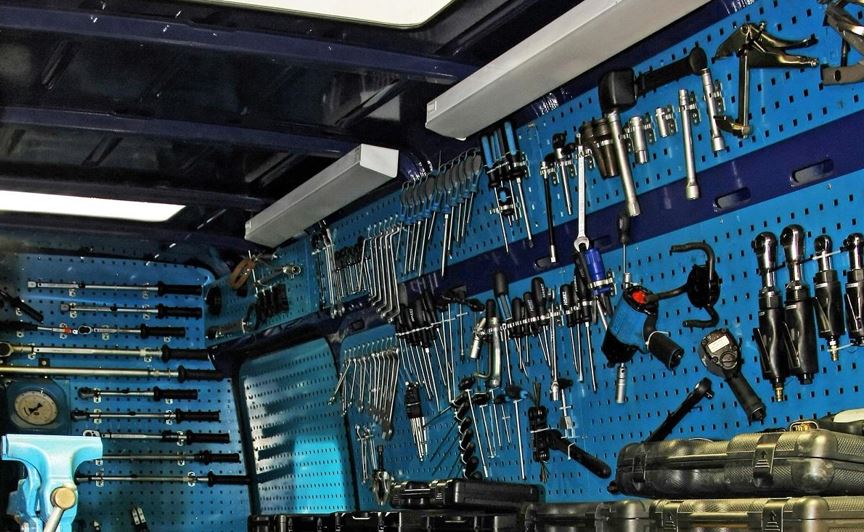Usually situated in a garage, workbenches are often recognised as being the ideal equipment for creating or fixing items in a variety of sizes. While small or medium-sized materials fit onto the workbench with room to spare, the typically large surface will cater to bigger items that need to be balanced across it. As well as size, there are more considerations to bear in mind when choosing an appropriate workbench.
How to set up a workbench
As there are many uses for a workbench, it can be worthwhile to map out how you want yours to look and what you want to be included on it. Workbenches and workstations come in different sizes, offering features such as drawers, back panels, wheels for transportation, multiple shelves, and even the option to attach power tools and other equipment.
You could take steps to add extra functionality to your workbench. For instance, if you want a power supply close to this equipment, you could attach an extension lead to the side, or you could add hooks and nails as a way of keeping pencils, rulers, sandpaper, wire wool, emery cloth and other useful accessories close to hand.
If you’ve already decided on the number of shelves you want and chosen the specific workbench you want to assemble, there are others factors to consider. These include the height of your workbench, the level of customisation you want from it in terms of transportation and how you will use it, and the thickness of the materials you’re using.
How high should a workbench be?
It could be something you forget to consider, but the height of your workbench will be an important feature. One that’s too short or too tall could cause problems when it comes to using your workbench for its intended purpose. Workbenches can be as tall as 920 millimeters and as short as 800 millimeters, depending on your preferences.
Based on the recommended height for using power tools like table saws, a general rule of thumb would be to choose a workbench above 850 millimetres tall. The decision over the height of the workbench is reliant on what it’s going to be used for, as many woodworkers would be perfectly suited to a workbench that’s around 800 millimetres tall for simple chisel and hand-plane use.
How to use a folding workbench
A perk to using a metal workbench is that it can easily be dismantled and moved due to the fact that most metal workbenches are only slotted together, as opposed to wooden workbenches which are often nailed and glued together. That being said, there are some workbenches that offer even easier transportation. Rather than actively looking at creating a hinge that slots onto your metal workbench, it would be simpler to pick out a workbench that offers the option to dismantle and transport.
Many portable workbenches are also designed to allow you to make them taller, shorter, longer, or more compact. Simply slot the elements together as you wish and screw them into place. Despite the fact that they are adjustable and portable, they can still hold loads of up to 750 kilograms, so you don’t have to compromise on strength and stability despite choosing not to have a permanently situated workbench.
How thick should my workbench top be?
Most modern metal workbenches possess a surface made from either chipboard or melamine. Chipboard can range from between 12 and 22 millimetres thick and melamine is usually between six millimetres and 19 millimetres thick. While this should be sufficient for most of the tasks you’d carry out using a workbench, there are options for fitting a thicker top layer separately such as timber or steel.
It’s also possible to use a hybrid of the two of you require a durable workbench with the easy transportation of a mobile workbench. If this is the case, the best option would be Bott’s range of mobile workbenches, which feature Rubber, MPX, or lino worktops that support both light-duty and heavy-duty usage.





Leave a Reply
You must be logged in to post a comment.